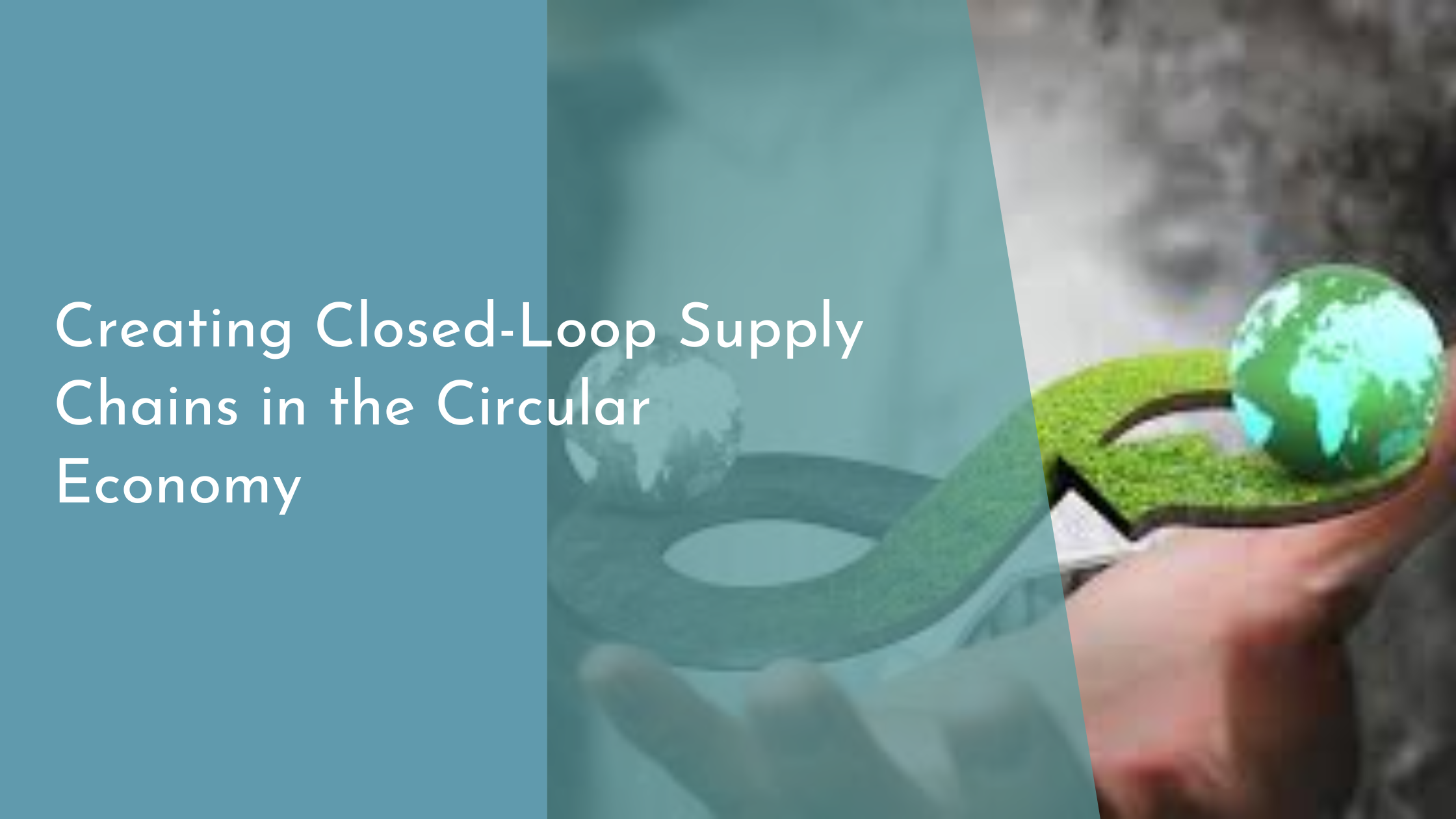Creating Closed-Loop Supply Chains in the Circular Economy
In the quest for sustainable business practices, closed-loop supply chains have emerged as a cornerstone of the circular economy. As companies globally strive to reduce waste and maximize resource efficiency, the transition from linear to circular models offers a promising pathway. This article delves into the intricacies of closed-loop supply chains, highlighting their benefits, implementation steps, challenges, and the promising future they herald.
Understanding Closed-Loop Supply Chains
Closed-loop supply chains are systems designed to foster sustainability by continuously cycling products and materials back into use. Unlike traditional linear supply chains, which follow a “take-make-dispose” model, closed-loop systems strive to minimize waste by reusing, refurbishing, recycling, and remanufacturing products. This approach not only extends the lifecycle of materials but also reduces dependency on virgin resources, thereby mitigating environmental impact.
Within these supply chains, end-of-life products are reintegrated into the production process. For instance, companies can reclaim used products from consumers, process them to extract valuable materials, and then reintegrate these materials into new products. This cyclical process ensures that resources remain in use for as long as possible, creating a sustainable loop that aligns with the principles of a circular economy. By adopting closed-loop systems, businesses can significantly reduce their ecological footprint while simultaneously enhancing resource efficiency.
Key Benefits of a Circular Economy
The circular economy offers several compelling benefits, chief among them being environmental sustainability. By promoting the reuse and recycling of materials, circular models significantly reduce waste sent to landfills and decrease greenhouse gas emissions. This contributes to cleaner ecosystems and aids in the battle against climate change, ensuring a healthier planet for future generations.
Moreover, the circular economy presents substantial economic opportunities. By minimizing waste and optimizing resource use, businesses can achieve cost savings and improve their overall efficiency. Additionally, circular models foster innovation, as companies seek creative solutions to design products with longevity and recyclability in mind. This not only drives technological advancements but also opens up new markets and revenue streams, contributing to economic resilience and growth.
Steps to Implement Closed-Loop Systems
Implementing closed-loop systems involves several strategic steps, starting with product design. Companies must design products with the end-of-life phase in mind, ensuring they can be easily disassembled, repaired, and recycled. This often requires collaborating with suppliers and partners to source materials that are recyclable or biodegradable, thereby laying the foundation for a sustainable supply chain.
The next step involves establishing a robust reverse logistics system to efficiently collect and process used products. This includes setting up collection points, incentivizing returns from consumers, and developing efficient processes for sorting and refurbishing materials. Through effective reverse logistics, companies can ensure a steady flow of materials back into the production cycle, enabling a seamless transition to a closed-loop supply chain.
Overcoming Challenges with Innovative Solutions
Transitioning to a closed-loop supply chain presents several challenges, including logistical complexities and changing consumer behavior. Innovative solutions such as digital technology and data analytics can play a crucial role in overcoming these challenges. By leveraging advanced tracking systems and real-time data, companies can enhance their reverse logistics operations, improving the efficiency and accuracy of collecting and processing used products.
Consumer engagement is another critical challenge, as the success of closed-loop systems often depends on active participation from end-users. Companies can address this by launching awareness campaigns and offering incentives for returning used products. Engaging consumers through loyalty programs, educational initiatives, and transparent communication can foster a culture of sustainability, encouraging individuals to participate in closed-loop systems actively.
Embracing the Future with Circular Strategies
As we look toward the future, the adoption of circular strategies is not just an option but a necessity for sustainable development. By embracing closed-loop supply chains, companies can not only contribute to environmental preservation but also position themselves as leaders in innovation and efficiency. The shift towards a circular economy entails reimagining business models, redefining value creation, and fostering collaboration across industries.
The transition to a circular economy is a journey of continuous improvement and adaptation. By leveraging technology, embracing innovation, and fostering collaboration, businesses can successfully navigate the complexities of closed-loop supply chains. As more companies commit to circular strategies, the collective impact will be profound, paving the way for a sustainable and prosperous future.
In conclusion, creating closed-loop supply chains within the circular economy represents a monumental shift towards sustainability. By understanding the principles of closed-loop systems, recognizing their benefits, and overcoming challenges with innovative solutions, companies can harness the power of circular strategies. As businesses worldwide embrace this transformative approach, they not only contribute to a healthier planet but also unlock new avenues for growth and innovation. The journey toward a circular economy is an exciting adventure, promising a brighter, more sustainable future for all.

